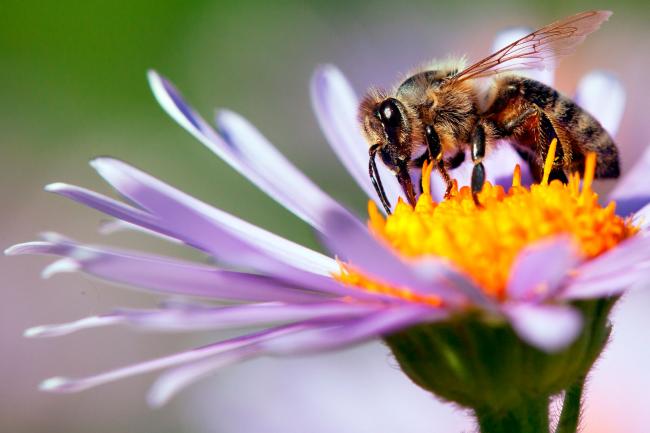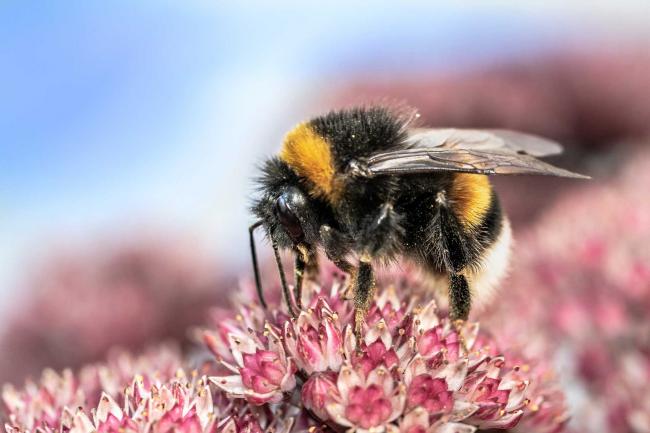Supported by the Royal Society’s Summer Science 2021 event, the survey from the Earlham Institute and Bee Saviour Behaviour aims to better understand how they are used and improve guidance for achieving busier bee hotels.
The data gathered could be used to identify ways to make the most of bee hotels in gardens, parks, and public spaces – including the best building materials and prime location - and inform conservation efforts to boost numbers of solitary bees.
The total area of UK gardens adds up to more land than our nature reserves and national parks combined, giving the public the power to make a positive change for bee populations through interventions that can be participated in where you live.
Bee hotels make a brilliant tool for creating nesting habitats for solitary bees in urban environments but many are there for merely decorative purposes and few have the durability to make a lasting impact.
Previous findings from pilot survey research have suggested that a third of bee hotels in the UK are not in working condition due to being poorly installed or not well designed to meet the bees’ needs.
With a simple five-minute survey, researchers aim to build up a national picture of how people use their bee hotels and how this is having a positive impact on pollinators.
Dan Harris, Founder of Bee Saviour Behaviour, a community-based project in Norwich, said: “When you consider the potentially hundreds of thousands of bee hotels there must be in UK gardens, if we see more beneficial bee hotels then the knock-on effect this would have for pollinators would be huge.
“As a simple citizen step, a bee hotel can be the resource to create a movement of bee saviour behaviour in our towns and cities. The key is ensuring that the bee hotels are brilliant for bees, and that means in design and installation.
“Our survey will establish how people are using their bee hotels to identify good practice but also to better target community education around how to ensure the public - and the bees that use them - are getting the most out of their bee hotels.
“Busier bee hotels are a beautiful invitation to connect with nature in your own patch, and a greater understanding of the life cycle of solitary bees can only bring a greater admiration for these incredible pollinators.”
The biggest challenge
Bees contribute to every one in three bites of food we eat. Instead of showing gratitude, the human population has had a huge detrimental impact on the earth’s ecosystems, directly contributing to habitat loss for bees. As well as urban expansion, the rise of industrial agriculture has taken over crucial natural wildflower habitats, severely affecting the demise of the bee population.
By removing vast areas of the bees’ floral habitat and replacing it with arable and grazing land, bee colonies are disrupted with depleted numbers and scarce pollen supplies. This is magnified by the widespread use of harmful pesticides, which kill-off pollinating insects, including bees.
“Simply put, the biggest challenge facing UK bees is the impact of humans on the environment,” said Harris.
“Practically speaking we’re talking about the disappearance of habitat and the introduction of harmful chemicals into the green spaces that bees occupy. The destruction of habitat isn’t all about concrete and urban landscapes. The way humans farm with acres of one crop has a massive impact on bee populations and the biodiversity of these rural areas.”
Mind shift
The citizen science project hopes to achieve a shift in perception and narrative around bee hotels. Existing bee hotels are often misconstrued as a garden feature, with little understanding of how they work or the positive impact they can have on bee populations with minimal effort.
Evaluating the survey results data, the Earlham Institute and Bee Saviour Behaviour will create campaigns shaped by the findings - helping both the public and the bees to enjoy all that nature has to offer.
Dr Will Nash, Postdoctoral Scientist at the Earlham Institute, said: “Lots of the science we do at the Earlham Institute involves analysing data to understand more about the natural world. At its heart, that's what this citizen science project is all about - getting that crucial data about bee hotels to really understand how they’re being used by the public.
“We want to use this data to help nature-lovers make more welcoming and effective spaces for the bee populations they live alongside. The more responses we get the better, as it’ll really help us to examine the trends and patterns in bee hotel usage - by both people and bees - nationwide.”
Professor Carlos Frenk CBE FRS, Chair of the Royal Society’s Public Engagement Committee, said: “Summer Science showcases some of the most exciting research in the UK and invites everyone to ask questions and investigate the world on their doorstep (and beyond).”
“For any scientist, good data is the best companion of a curious mind, and using people-power we can sometimes learn things that are off limits to the most powerful telescope or computer.
“Whether you’re checking in guests to your back garden bee hotel, spotting galaxies among a million stars, or being a cell detective, there are important answers to be found that advance our knowledge and our understanding of the world around us.”
The bee hotel survey is now open, for more info please see: https://saviourbees.co.uk/citizenscience/







